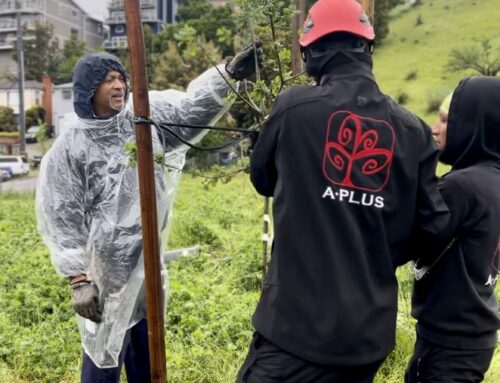
The bunya bunya tree is famous for its massive, pineapple-like seed cones. Also known as the false monkey puzzle tree, it is usually planted as a specimen tree in parks and arboretums. Beware of resting for too long in its shade - ripe cones fall spontaneously and can weigh more than 20 pounds! Wildlife is a big fan of these cones, eating the seeds and burying them for later consumption, inadvertently spreading the population of bunya bunyas.
NAME & ORIGIN
Family: Araucariaceae
Scientific Name: Araucaria bidwillii
Native to: Australia
CHARACTERISTICS
Foliage Type: Evergreen
Tree Form: Pyramidal to rounded canopy
Leaves: Scale-like, stiff, sharp
Pollen Cones: Cylindrical, up to 8" long
Seed Cones: Very large, weigh up to 22 lbs
Mature Tree Height: 80-100 ft
Mature Tree Spread: 20-50 ft
COMMON ISSUES
Scales, iron chlorosis.
SUITABLE FOR:
Sunset Zones: 7-9, 12-24
Sun Exposure: Full sun to full shade
Soil Moisture Level: Moist
Uses: Specimen tree. Not ideal near buildings and heavy-use areas due to heavy cones dropping.
DID YOU KNOW?
Bunya bunyas are integral to traditional aboriginal lifestyles in its native range of Queensland, Australia. The tree was widely used for its wood and edible seeds. In fact, the word bunya means big in many aboriginal languages. Doubling the word to bunya bunya simply means big big, or really big. A quick glance at the size of its seed cones explains the aboriginal name.





